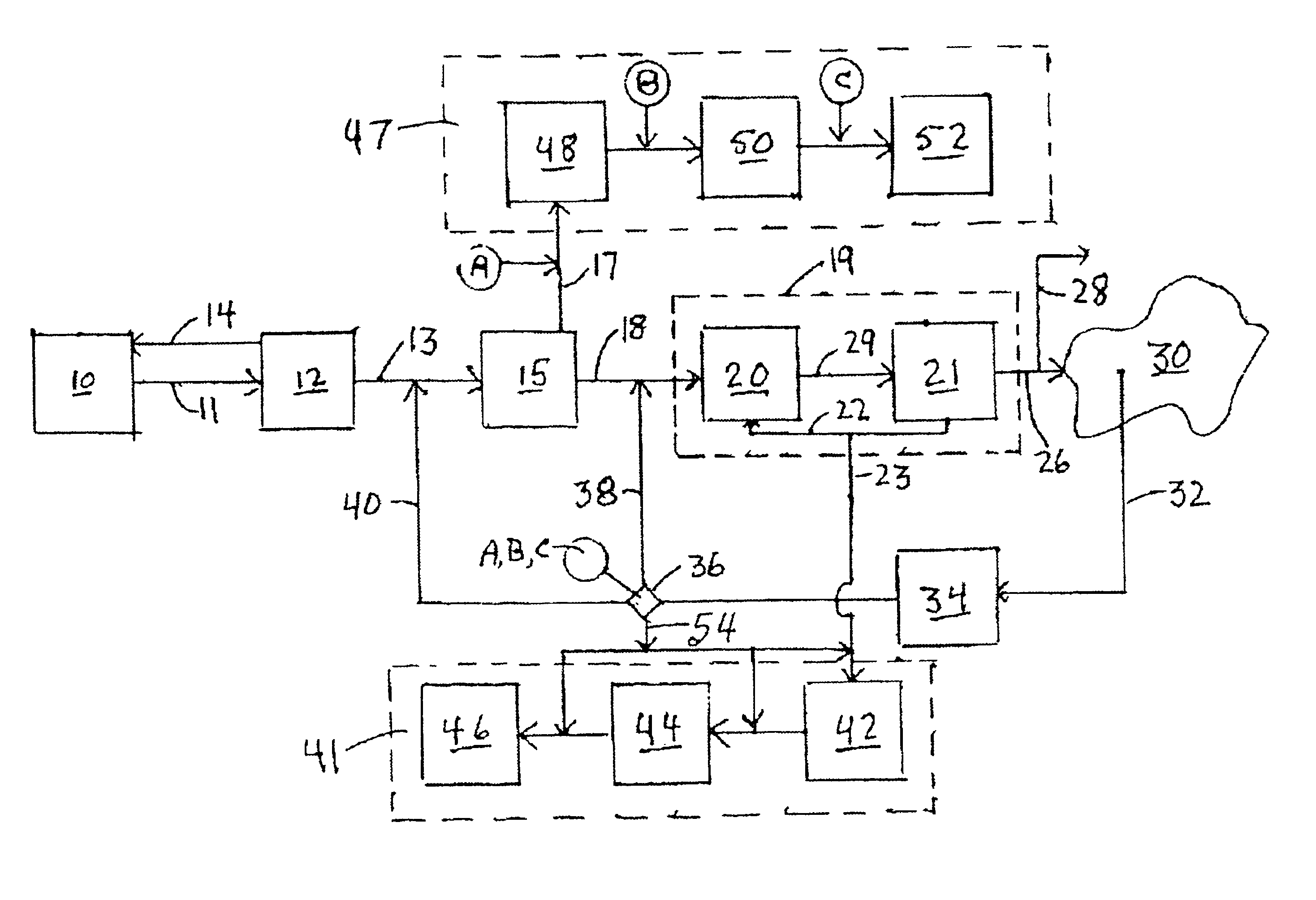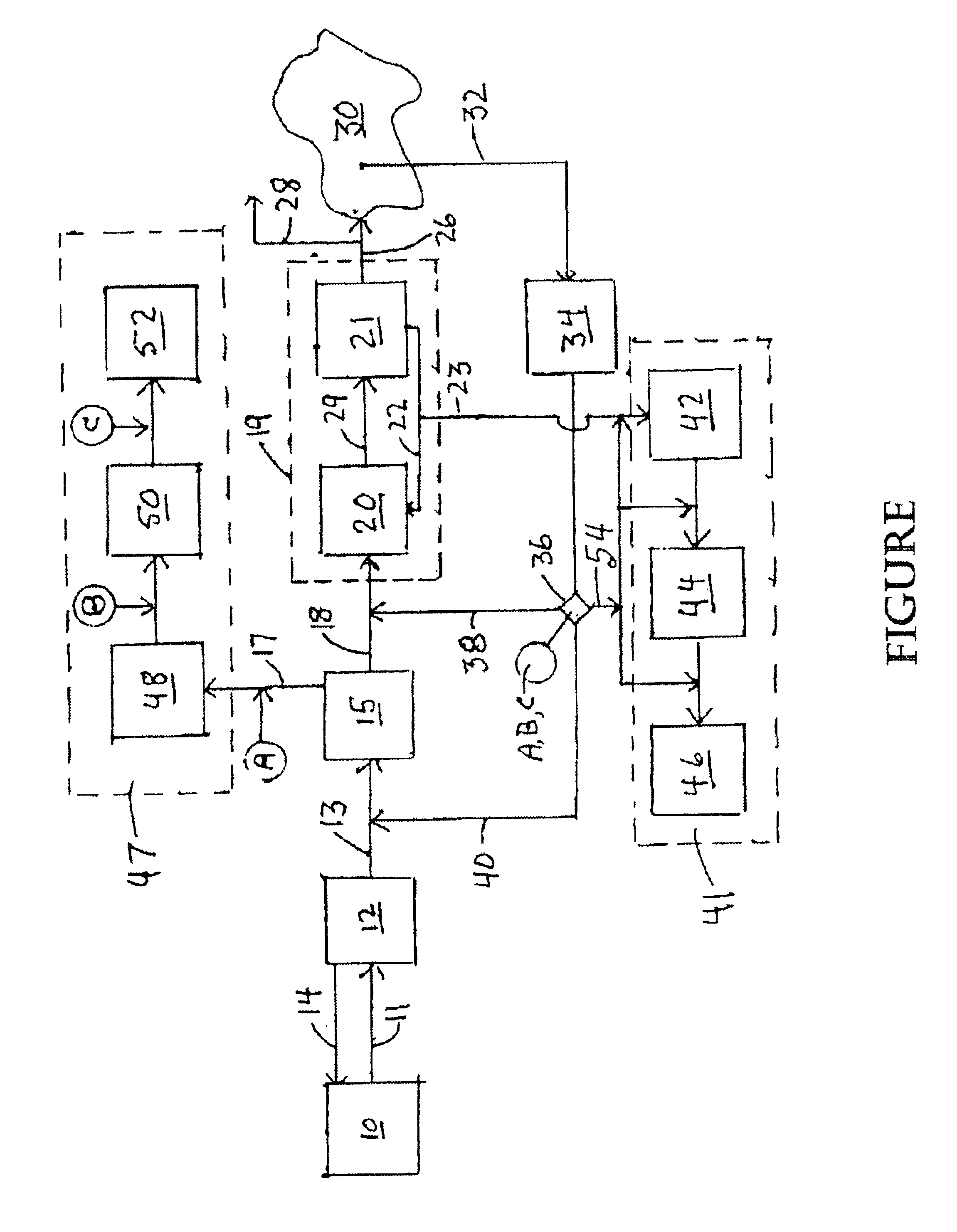Disposal of sediment from pond or lagoon at petroleum refinery
a petroleum refinery and sediment technology, applied in the direction of liquid displacement, multi-stage water/sewage treatment, separation process, etc., can solve the problems of cost-intensive removal, disposal or containment of sediment using currently available methods, and achieve efficient and cost-effective operation
- Summary
- Abstract
- Description
- Claims
- Application Information
AI Technical Summary
Benefits of technology
Problems solved by technology
Method used
Image
Examples
Embodiment Construction
With reference to the FIGURE, a wastewater stream 11 from a refinery 10 is fed to a primary oil separation stage 12 for separating hydrocarbons from the wastewater stream 11 by gravity and for providing a hydrocarbon-reduced wastewater stream 13, and for returning the separated hydrocarbons 14 to the refinery 10. There is a significant amount of recoverable oil in refinery wastewater, and most of the recoverable oil is separated in the primary separation stage 12.
The primary oil separation stage 12 is typically a gravity oil separator, such as an American Petroleum Institute (API) oil separator, or parallel plate or tilted plate separators. These separators are usually operated without use of any chemicals or coagulants.
The API gravity separator is sized to allow most of the free oil to float to the surface, and the heavier solids to fall to the bottom. These separators are normally an integral part of a typical oil refinery wastewater treatment plant, due to the significant amount ...
PUM
| Property | Measurement | Unit |
|---|---|---|
| Fraction | aaaaa | aaaaa |
| Time | aaaaa | aaaaa |
| Percent by volume | aaaaa | aaaaa |
Abstract
Description
Claims
Application Information
 Login to View More
Login to View More - R&D
- Intellectual Property
- Life Sciences
- Materials
- Tech Scout
- Unparalleled Data Quality
- Higher Quality Content
- 60% Fewer Hallucinations
Browse by: Latest US Patents, China's latest patents, Technical Efficacy Thesaurus, Application Domain, Technology Topic, Popular Technical Reports.
© 2025 PatSnap. All rights reserved.Legal|Privacy policy|Modern Slavery Act Transparency Statement|Sitemap|About US| Contact US: help@patsnap.com


